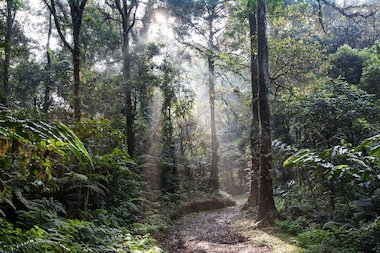Rainforests: topic summary
Add to My Folder
Our handy topic summaries can be used to support homework, as well as providing helpful collections of related resources for teachers to use in school or for parents to use for home learning.

Using an atlas map, locate the world’s main rainforest regions. They lie either side of the equator between the Tropics of Cancer and Capricorn. Look for countries like Brazil in South America, the Ivory Coast and the Democratic Republic of the Congo in Africa, and Indonesia and Thailand in Asia. The climate in these regions is hot and wet with temperatures ranging between 25-30º Celsius and an annual rainfall of anything up to 400cm. Rainforests are often described as the Earth’s lungs as they take in carbon dioxide (CO²) and produce oxygen (O²).
The dense undergrowth and vegetation of the rainforests is usually described as having four main layers. On the Forest Floor it is warm, dark and damp, here decomposing plants and root systems can be found. The Understory or Shrub Layer contains small, young trees, bushes and shrubs. Above this comes The Canopy where taller trees up to 30m high extend their branches so leaves can catch the sunlight. It is here that many creatures live. Finally, in The Emergent Layer the tallest trees thrive. Some of these can be as much as 60m high.
Already a member? Sign in below.
Published 29 July 2020
Reviews
You need to be signed in to place a review.